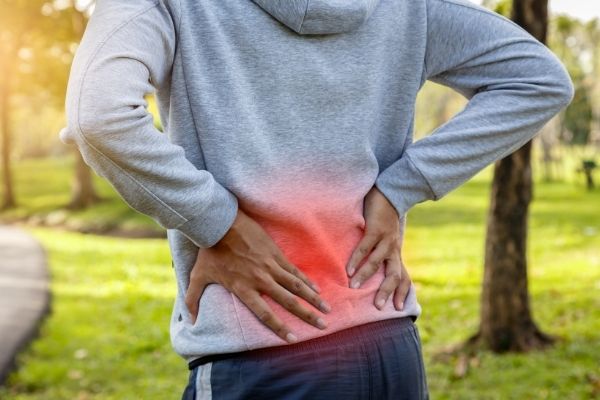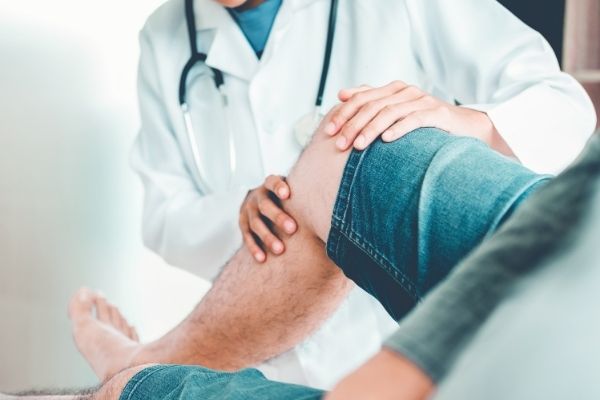Overview:
The lumbar spine, or low back, is a remarkable construction of interrelating bones, joints, nerves, ligaments, and muscles working simultaneously to provide support, strength, and elasticity. However, this structure is prone and susceptible to low back injury and low back pain. The lumbar spine is so susceptible to low back pain and low back injury, it is one of the leading causes of work-related disability. Low back pain equally effects men and women with a range of intensity and experts estimate about eighty percent of men and women will experience low back pain at some point in their lives.
Most often, individuals suffer from acute low back pain which is short-term. But, chronic low back pain can last up to several weeks. Low back pain often stems from muscle strain or expected decline in bodily condition. But, there are more intense conditions in which low back pain becomes chronic. Conditions not limited to sciatica, herniated discs, degenerative discs, facet joint dysfunction, spinal stenosis, osteoarthritis, compression fracture, work or sport related injury, or even failed surgery. Symptoms related to acute low back pain and chronic low back pain are; numbness, tingling, burning sensations, tenderness, sharp and debilitating jolts of pain near the spine, muscle weakness, muscle cramps, decreased reflexes, decreased range of motion, limited use of lower extremities, and even loss of bladder or bowl control.
To properly diagnose a patient’s low back pain and determine a treatment plan, detailed information must be specified during a consultation. Inquiries typically include, activity levels, sleep habits, posture, and injuries. Once a thorough evaluation of an individual’s low back pain has been completed, several treatment options may be considered. One treatment option for low back and radicular leg pain is Lumbar Epidural Steroid Injections. Injections are considered the most effective form of treatment because the medicine is delivered directly to the area generating the low back and leg pain. Whereas, oral medications are not, and injections are non-habit forming. A Lumbar Epidural Steroid Injection is a simple, 5-10 minute, in office procedure. The injection contains a corticosteroid mixture that is injected into the epidural space surrounding the lumbar spine. The medication coats the nerves causing the low back pain numbing them.
If injections haven’t worked for your low back pain in the past: Why try again with Southern Coast Pain Specialists?
Several patients have come to our facility for a second opinion or second consultation to evaluate their low back pain due to ineffectiveness of prior injections and oral medication therapy. These patients have found our low back pain treatment beneficial. There are several reasons why a patient should try Lumbar Epidural Steroid Injections for their low back pain at Southern Coast Pain Specialists. Among them are; technological advancement, new and innovative techniques, a rigorous work ethic to diagnose source of low back pain, high low back pain relief success rate, and a medical staff that works tirelessly to cultivate relationships with patients and ensure the best possible care. We truly care about your low back pain!
“I drive from Charleston to Beaufort to see Dr. Schuyler. I have had low back injections in the past with other doctors that have been okay but I follow him because he is the best at what he does! My low back feels great after his injections.”
– A.Berry
“The side of my low back I had done last week feels great! I am hoping to get the other side done at my next visit. It has really helped!”
-Anonymous
If injections are new to you. What to expect:
An intravenous line or IV is started to administer a calming medication to make the procedure less stressful. The patient then lies comfortably on an X-ray table so the physician can best visualize the low back and administers a numbing medication to the low back. After several seconds, the numbing medication is in effect, and with X-ray guidance, the physician directs a small needle into the spine’s epidural space. A small amount of contrast is injected to ensure the needle is properly positioned and the anesthetic corticosteroid mixture is injected. Finally, the needle is removed. The patient is then closely monitored by the medical staff post procedure and discharged. Follow up appointments should be scheduled to document pain levels and, if necessary, more injections can be arranged. The injections typically alleviate a patient’s low back pain for many months to a year or more. Based on results the procedure can be safely repeated to maintain low back pain improvement. Side effects such as numbness or tingling are common and should subside after a few hours. However, uncommon side effects such as headaches or skin rashes may occur. Consult with our office if you struggle with these issues post injection.
Tips to Prevent Low Back Pain:
There are several ways to prevent low back pain or maintain reduced back pain after injections. Tips to prevent low back pain and maintain reduced back pain include; avoiding long periods of inactivity, upholding proper posture, attentiveness to clean eating and healthy weight, stretching before and after physical activity, lifting with the legs not the low back, evading strenuous movement, heat or ice therapy, and over the counter anti-inflammatories or essential oils. Low back pain treatment preferences vary, and the Southern Coast Pain Specialists team is determined to find low back therapy that best serves you.







